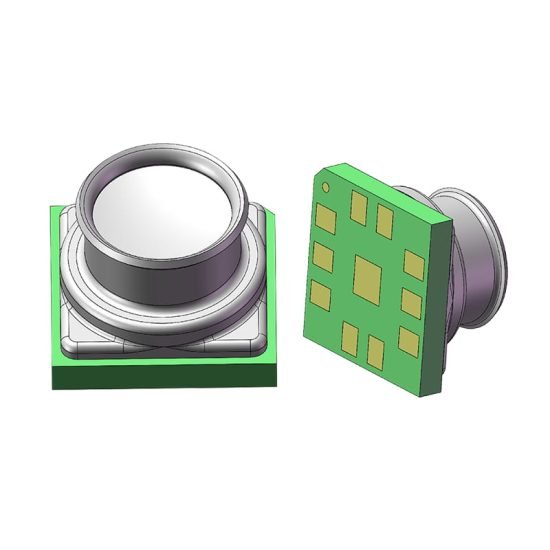목록
The photo shows a compact MEMS pressure sensor, WF27HH-style, with an SMD package and a metal vent, designed to sit straight on a PCB for local pressure/airflow sensing. Flying toys need airflow monitoring to stay stable and responsive: lightweight frames react to small gusts, so sensors must pick up pressure changes quickly and combine them with attitude data. The trick is choosing the right sampling strategy, using low-power wake modes, and having predictable error models so you get reliable control inputs within tight weight and power limits.
1. Sampling rate and power trade-offs
In lightweight flying toys, higher sampling isn’t always better. You want a strategy that watches for events and respects power limits: drop to low-rate sleep when things are calm, then spike sampling during pitch, roll, or quick user moves to catch fast airflow changes. Sensor-side adaptive wake-up — say via micro-motion detection or threshold triggers — greatly extends battery life. That needs sensors with low-noise event detection and adjustable thresholds, plus a controller that can flip sampling modes and keep time in sync.

2. Fusion of pressure and IMU
One pressure readout alone gets messed up by environment and attitude. Fuse pressure with the IMU (accelerometer and gyro) and you can much better spot local airflow and short disturbances. The fusion algorithm must handle async samples, quantisation noise and temperature drift: lightweight Kalman or complementary filters work well, pairing the pressure sensor’s slow response with the IMU’s fast reactions to recognise short-term airflow and correct attitude. Engineering-wise, time-stamp sync, matched sampling rates and calibrated error models are key.
3. Real-time motion tracking and user-friendly design
When people buy flying toys, ease of use and interaction matter most. Real-time motion tracking depends on a high-precision sensor mix (tilt, heading, head/gesture tracking where needed) and control logic that responds consistently. To keep the experience smooth, latency between user input and flight response must feel immediate, and solid attitude control should cut down on unwanted drift. Using ultra-low-power sensors with automatic standby reduces the hassle of frequent charging. From an engineering view, keep sampling and compute latency in check and streamline menus and gesture controls for non-expert users.
4. Integration and production considerations
Pick sensors for both accuracy and easy integration: small SMD packages, standard pads, clear comms (I²C/SPI) and configurable modes speed development and lower cost. For production, automate calibration (offsets and temp compensation), ensure test-fixture compatibility and secure supply chains. For toy makers, offering a modular sensor kit and reference firmware makes integration quicker and more consistent.
5. Reliability, error control and preserving the user experience
Good airflow monitoring depends not just on sensor specs (resolution, linearity, drift) but on the system’s ability to detect and correct errors. Build clear error models and implement online correction in firmware to prevent long-term bias from spoiling control. Pair threshold alerts and fault-tolerant measures so the system can gracefully fall back to safe modes when a sensor misbehaves or conditions change suddenly. Low-maintenance behaviour and smart power-saving also count heavily in how users judge the product.
결론
Motion-sensor sampling acts as the bridge in flying toys: by setting sensible sampling tiers, using event-driven wake-ups, fusing pressure with IMU data, and prioritising low-power user-friendly behaviour, you balance lightweight design with good battery life. WF27HH-style small MEMS pressure sensors, with SMD packaging and low-power features, fit this role well. For engineers and decision-makers, the essentials are balancing sampling rate and power, ensuring time sync and online error correction, and providing easy-to-integrate hardware and firmware to shorten development and boost the end-user experience.
위의 소개는 압력 센서 기술 적용의 표면적인 부분에 불과합니다. 우리는 다양한 제품에 사용되는 다양한 유형의 센서 요소, 작동 방식, 장점과 단점을 계속해서 탐구할 것입니다. 여기에서 논의된 내용에 대해 더 자세히 알아보려면 이 가이드 뒷부분의 관련 콘텐츠를 확인하세요. 시간이 촉박한 경우 여기를 클릭하여 이 가이드의 세부정보를 다운로드할 수도 있습니다. 공기 압력 센서 제품 PDF 데이터.
다른 센서 기술에 대한 자세한 내용은 다음을 참조하십시오. 센서 페이지를 방문하십시오.
